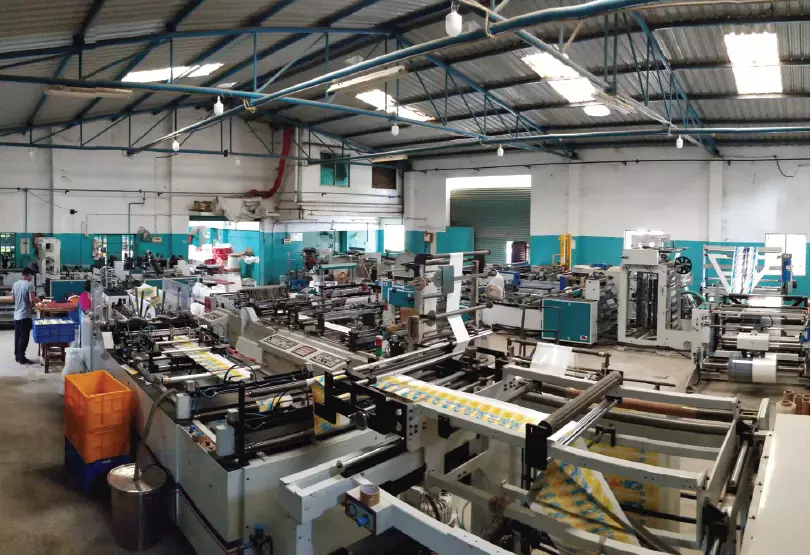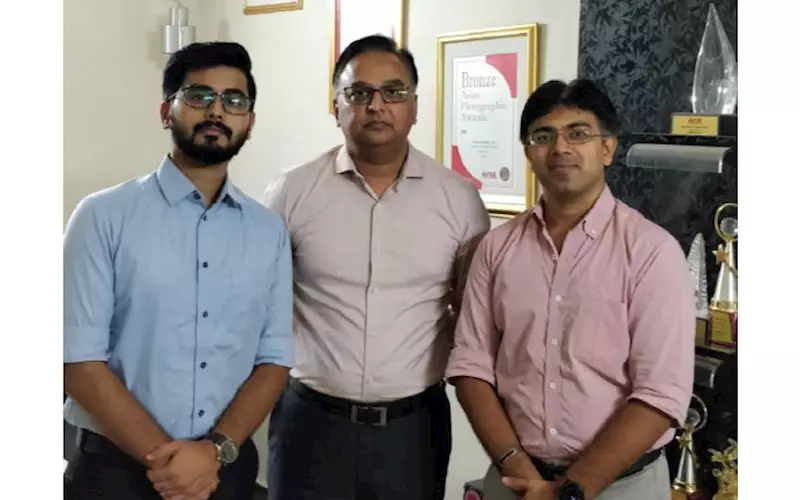Pratik Mehta: Winning combination has ensured 21 awards for Multiflex
Multiflex Polybags bagged three honours for excellence in printing on narrow-, wide- and mid-web flexible films at the Asia Flexo Awards 2019, helping India get the lion’s share with 15 awards. Sriraam Selvam of WhatPackaging? speaks to the Chennai-based company's Pratik Mehta to find out how it has evolved into one of the front-runners in the flexographic printing segment
26 Oct 2019 | By Sriraam Selvam
Multiflex Polybags (MPPL) has been in business since 1963. Set up in 1989 as a partnership firm and reconstituted as a private-limited company in 2013, Chennai-based MPPL manufactures flexible packaging material. The company is promoted by Rajendra Mehta.
Today, MPPL has three units of the latest CI flexo printing machines. Pratik Mehta, the son of Rajendra Mehta says, "We have recently added a five-layer polyolefin blown film extruder and a fully automated reel-to-bag paper bag making machine with integrated multi-colour printing and handle fixing unit." In addition to this, the company has bag making and finishing machines.
MPPL has more than two decades of experience in the packaging industry. One key point is a strong sourcing network which enables seamless management of the production cycle. Pratik reflects, "Unlike in the 1970s, where the converters had the final word on quality and deliverance, nowadays, the customers are more aware and clear about their requirements.
"Therefore, the recent investments have been a boon. Pratik says, "Investments in the latest technology plus an experienced team of more than hundred professionals has enabled us to meet the expectations of our clients."
One of the key reasons MPPL scored at the Asia Flexo Awards was the ability to achieve accuracy on a variety of multi-colour designs with precise alignment. Pratik says, "In order to ensure print accuracy and precise colour, we regularly carry out fingerprinting of our various flexo presses. We use CyFOS from DuPont to do this. With process data obtained from fingerprinting, we are able to do the necessary adjustments in pre-press to obtain accurate reproduction.

Multiflex Polybags has a 100-ton production capacity
We also train our operators to strictly adhere to the process parameters." The biggest risk in colour reproduction, according to Pratik, remains the special Pantone shades that pose a big challenge when it comes to accurate colour reproduction.
The flexo advantage
Today, MPPL prints on LLDPE, HMHDPE, PP, BOPP, CPP, and polyester poly film with a production capacity of 100 tonnes per month. Advances in automation and fast drying allow the latest presses to compete with gravure. It mainly can be attributed to the amazing improvement in flexo print quality over the past decade.
After all, it only takes a couple of minutes to change a cylinder. Also, thanks to pre-register and automatic register, the jobs are up and running.
In addition, one can aim for seven-colour fixed palettes. The latest generation of CI presses used for flexible packaging has automatic impression setting that works from zero speed.

Pratik is confident to cater to brands in a tough marketplace. "We have an edge in terms of knowhow of handling jobs for flexo printing. We are able to deliver gravure-like quality using flexographic process. To a large extent we have successfully been able to convert jobs that were previously done in gravure, to flexography." He adds, switching to single-use plastic laminate favours flexo printing. "As new structures such as PE+PE are becoming the norm, flexo will have an upper hand."
Other than form, MPPL has been sensitised to the content. Pratik has been tracking the FSSAI ruling about banned toluene-based inks for food packaging. Pratik says, "We were aware of the hazards of toluene ink system and have always stayed toluene-free since the beginning. Flexographic printing is a toluene-free printing process." MPPL does not use any kind of fillers, recycled or sub-standard material and its inks and solvents are 100% food grade.
The way ahead
When asked what sort of backward integration MPPL provides with film extrusion machines, Pratik explains, "We have the best three-layer and five-layer extrusions systems. And with the in-house film extrusion facility, we are able to provide tailor-made solutions. This, in conjunction with a full-fledged testing facility, enables us to test parameters such as dart impact, tensile strength, gloss, and so on. We are also able to develop new specialty films to meet customer needs."

The biggest painpoint for the company is that the job runs are getting shorter day by day, in the process creating a lot of wastage due to frequent changeover.
But Pratik is bullish about the future. He says, one reason MPPL is different from other players in the flexible packaging market is, "We lay emphasis on work ethics, teamwork, skill development and operator training. We regularly call in experts to our plant to train our team and update their skills."
This is perhaps the reason why the MPPL team bagged so many accolades. Pratik says, "We have won 21 awards (gold, silver, bronze all put together) in the Asian region. The reason behind our success are the efforts that we put in to understand the job and customer expectations.
Then, we put our ideas together in pre-press and match it with the best flexo print quality. And of course, the right combination of plate, tape, ink and anilox all put together make for a winning combination."
QUICK FIVE WITH PRATIK
What is the toughest, printing on narrow-, wide- or mid-web?
Wide-web is the toughest. The sheer size of the machine and plates, plus the number of colours makes it tough.
What about repeats?
If there are repeats (multi-ups) across the web then achieving consistency on registration for wide-web for every repeat is a challenge.
Which job has been the most challenging yet?
An eight-colour job with special Pantone shades and high-end graphics. It also had a tight registration requirement and the repeat size was just 132-mm, thus, making it a very challenging job.
Every state has implemented its own form of plastic ban. What do you think is an ideal policy to tackle plastic pollution?
In my view, there are no viable and environmentally friendly alternatives to plastics. Plastics offer great advantages and are a boon to our society. The government should spread awareness about plastics not the plastic usage but its collection and disposal is the problem.
Where do you see MPPL five years from now?
We see ourselves producing good quality jobs amidst cut-throat competition and bringing in the latest digital printing technologies which by then would be mature and ready for commercial flexography production.














 See All
See All